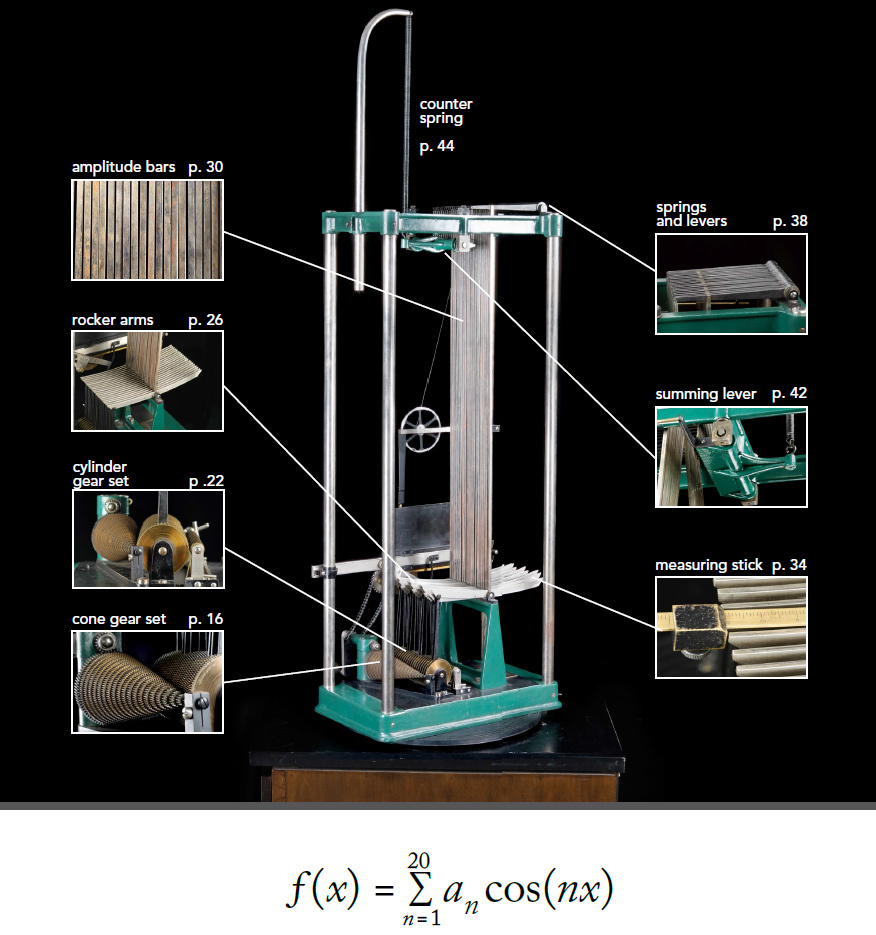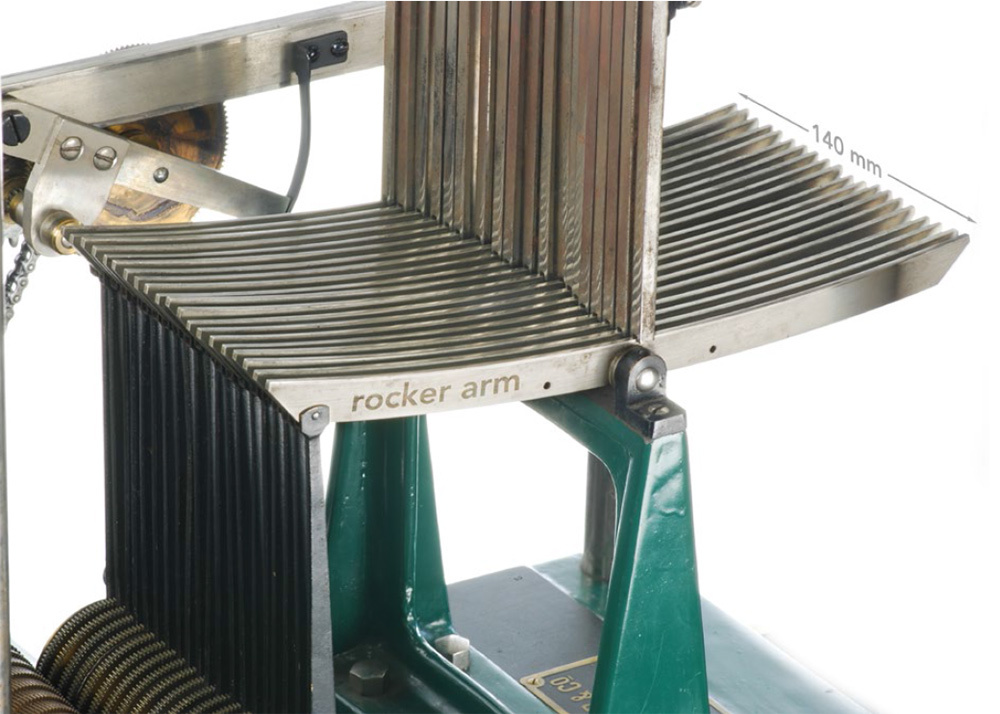Steampunk computer by Albert Michelson
It turns out that as early as the 19th century there were computers capable of performing the most complicated mathematical calculations. One of the unique instances is the Albert Michelson harmonic analyzer. The instrument performed the Fourier transform. This function is widely used today in computer science, signal processing, physics, number theory, combinatorics, probability theory, cryptography, and other fields.
In honor of the 100th anniversary of the harmonic analyzer Michelson published a free e-book with great illustrations, which describes the principle of operation of this wonderful device.

The American physicist Albert Michelson is known for inventing the Michelson interferometer named after him and for accurately measuring the speed of light. In 1907 he became the winner of the Nobel Prize in Physics "for the creation of precise optical instruments and spectroscopic and metrological studies carried out with their help." Creating a harmonic analyzer at the time did not seem to be his most important work.
')
So, how does this device.
The whole system is driven by a chain.

Next comes the action of a conical gearbox, locked together (all gears rotate together). The box converts the constant movement of the chain to one of the 20 values needed by the machine. The smallest gear has 6 teeth, the next 12, then 18, and so on, up to 120.

The bevel gearbox transmits rotation to a pre-calibrated cylindrical gearbox.

Vertical rods transmit vibrations from the gears of a cylindrical box to concave connecting rods.

A number of rods hovers up and down.

If you look at this row, it represents a sine wave with a frequency corresponding to the number of turns of the handle.

Twenty long vertical bars of approximately 80 cm (amplitude bars) are needed to change the parameters of the sine wave when passing to the levers above.

By moving the lower end of the rod along the connecting rod surface, we set the amplitude value for harmonic oscillations. For the most accurate measurements, the device is equipped with a wooden ruler with a movable lock.

At the top of the machine, the 20 levers move in accordance with the movements of the rods.

Their movement is transmitted to one resultant lever of a bizarre form (summing lever), and then to a computational spring, vertically located at the very top of the structure.

Since the scope of the rods is only enough to move the spring by only a few millimeters, the device has an amplifying mechanism to provide a clear picture of the output (in height). Plus six gears for compressing / stretching the graphic in width.
For recording on a moving tape, different methods were used. For example, in this instance a marker is inserted.

Here are examples of sinusoids, which are obtained at the output with different settings amplitude rods.

Photos with descriptions of the harmonic analyzer are collected in a free e-book (PDF) . There is also a series of videos about Michelson's computer. Below is the introductory video.
The following three describe in detail the principles of operation and design of the device.
In honor of the 100th anniversary of the harmonic analyzer Michelson published a free e-book with great illustrations, which describes the principle of operation of this wonderful device.

The American physicist Albert Michelson is known for inventing the Michelson interferometer named after him and for accurately measuring the speed of light. In 1907 he became the winner of the Nobel Prize in Physics "for the creation of precise optical instruments and spectroscopic and metrological studies carried out with their help." Creating a harmonic analyzer at the time did not seem to be his most important work.
')
So, how does this device.
The whole system is driven by a chain.

Next comes the action of a conical gearbox, locked together (all gears rotate together). The box converts the constant movement of the chain to one of the 20 values needed by the machine. The smallest gear has 6 teeth, the next 12, then 18, and so on, up to 120.

The bevel gearbox transmits rotation to a pre-calibrated cylindrical gearbox.

Vertical rods transmit vibrations from the gears of a cylindrical box to concave connecting rods.

A number of rods hovers up and down.

If you look at this row, it represents a sine wave with a frequency corresponding to the number of turns of the handle.

Twenty long vertical bars of approximately 80 cm (amplitude bars) are needed to change the parameters of the sine wave when passing to the levers above.

By moving the lower end of the rod along the connecting rod surface, we set the amplitude value for harmonic oscillations. For the most accurate measurements, the device is equipped with a wooden ruler with a movable lock.

At the top of the machine, the 20 levers move in accordance with the movements of the rods.

Their movement is transmitted to one resultant lever of a bizarre form (summing lever), and then to a computational spring, vertically located at the very top of the structure.

Since the scope of the rods is only enough to move the spring by only a few millimeters, the device has an amplifying mechanism to provide a clear picture of the output (in height). Plus six gears for compressing / stretching the graphic in width.
For recording on a moving tape, different methods were used. For example, in this instance a marker is inserted.

Here are examples of sinusoids, which are obtained at the output with different settings amplitude rods.

Photos with descriptions of the harmonic analyzer are collected in a free e-book (PDF) . There is also a series of videos about Michelson's computer. Below is the introductory video.
The following three describe in detail the principles of operation and design of the device.
Source: https://habr.com/ru/post/363729/
All Articles